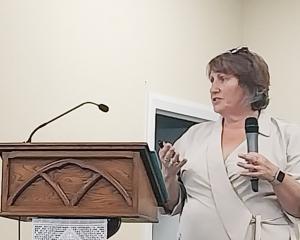The Central Otago District Council may become involved in water infrastructure investment, according to a report to be considered at tomorrow's council meeting.
But first, the council needed to get a clear view of what was happening and what the opportunities were, before deciding whether to invest in water infrastructure, Mayor Malcolm Macpherson said.
The report, by CODC business development manager Jonathan Gadd, follows a fact-finding mission in July, with Dr Macpherson and councillor Barry Becker visiting a number of South Island local authorities and irrigation interests.
"When we talked to people in other parts of the country, we were given a clear view on the economic viability of water and irrigation needs," Dr Macpherson said.
It was becoming more common for local authorities to invest in water infrastructure, he said.
The Waitaki District had invested $10 million in the North Otago scheme, and Timaru had put $1 million into the Opua scheme a few years ago.
Talking to key players in the early stages was vital to the success of such a venture.
A large dam was to be built in the Tasman district, without a resource consent hearing, after key players such as Fish and Game, the Department of Conservation, recreational user groups and local iwi had met to develop the project, rather than saying "take it or leave it".
"If the Central Plains project in Canterbury fails, it's because they dumped it on people and it's costing a fortune to have it consented. There are a number of individuals and groups that are very upset about it," he said.
In his report, Mr Gadd said Dairy Creek, the Mt Ida Irrigation Company and the Tarras community water scheme were large schemes the council could consider becoming involved in.
Water has been an essential element in the development of Central Otago.
Without the 17 community and private irrigation schemes in the district, which provide water to about 30,000ha of land, as well as the numerous takes and small bores, there would be little or no horticulture or viticulture, and pastoral farming could be extremely limited.
Most of the irrigation systems were old and, with the exception of the Manuherikia and Earnscleugh schemes, no new large-scale irrigation schemes have been developed in central Otago since the 1930s.
Ministry of Works schemes were privatised in the early 1990s and are now operated by farmer-owned irrigation companies.
Until now, the CODC has taken a hands-off approach to irrigation schemes, other than where they intersect with interests for residential supply.
As a result, council has had no influence and little apparent common interest with the irrigating community.
It was recognised the council had neither the experience nor the skills to effectively address any approaches, or to determine an appropriate stance that would provide some certainty, Mr Gadd said.
"All of Central Otago, including viticulture, horticulture and agriculture, relies on water to survive, so getting involved with the infrastructure does make sense."
A social and economic assessment of the district's water resources and an agreement to talk to interested parties at the outset were needed before the council committed itself further.
In the interim, it would be business as usual for small investors, Dr Macpherson said.
"But don't come to talk to us about million-dollar investments until we know whether we're in that game or not," he said.
The first step is to prepare a strategic view of the use of commercial and irrigation water in Central Otago, expected to be ready for inclusion in next year's long-term council community plan.
Councillors will vote on the issue at tomorrow's full council meeting.












